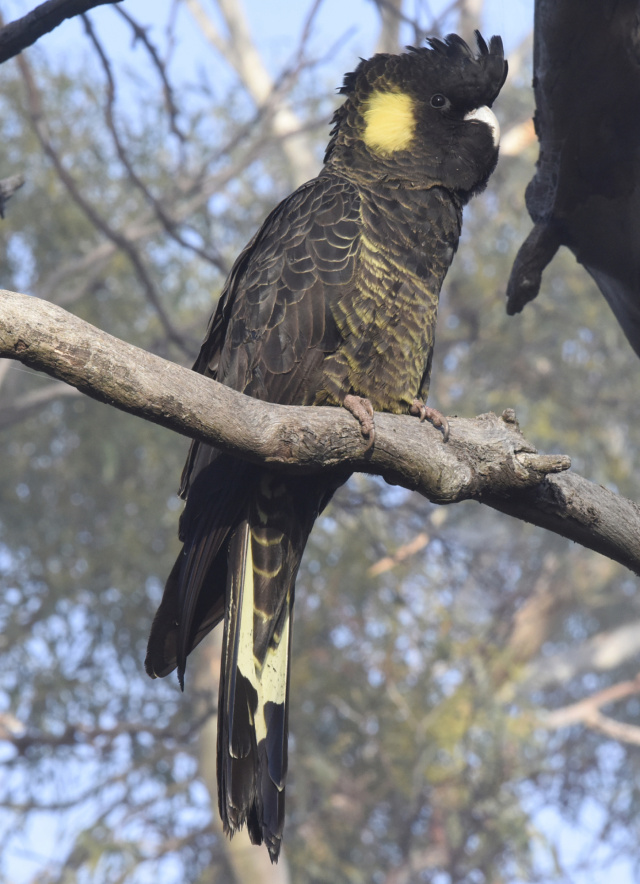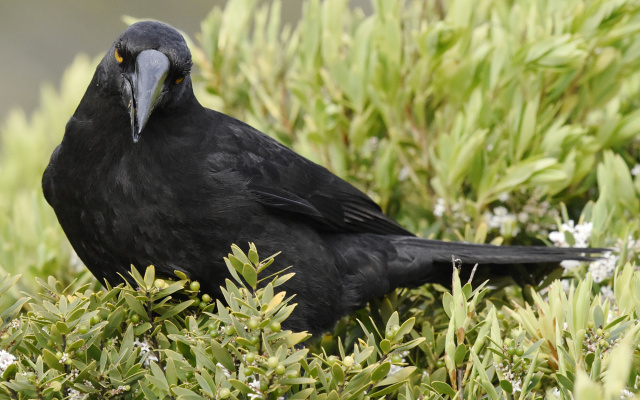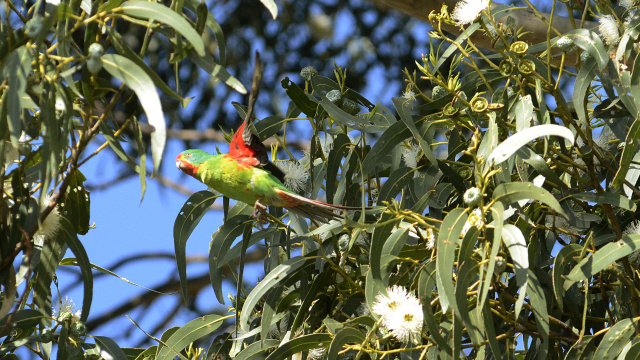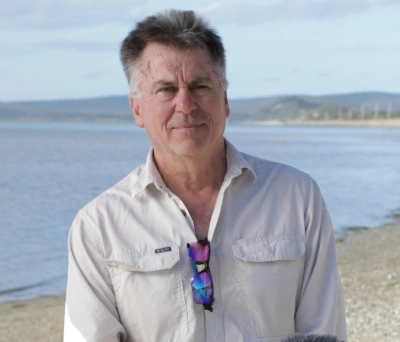Why cable cars and zip lines will ruin this refuge
We are remarkably fortunate to have Kunanyi/Mt Wellington sheltering us and its wonderful birds every day. The mountain is a truly special place, a globally precious refuge that must be protected now and into the future. Few Tasmanians would be aware that Kunanyi is recognised internationally as an Important Bird Area - contributing to the conservation of global biodiversity. Its woodland and alpine habitats provide a rich mixture of nesting and foraging habitats for a broad range of birds, many listed as endangered or critically endangered, such as wedge- tailed eagle, grey goshawk, masked owl. When the blue gums flower, swift parrots - one of only three species of migratory parrots in the world - will nest and feed on Kunanyi.

Kunanyi is a refuge for many of our endemic birds - species found nowhere else on Earth - the black currawong is perhaps the most obvious of our mountain birds, but home also to scrubtits, Tasmanian scrubwrens, dusky robins and yellow- throated honeyeaters. Kunanyi provides critical habitats for the birds many of us see daily. Many of the bird species we see in and around the city and suburbs comes from Kunanyi and its foothills - a source for our interactions with wild birds. The approach of winter drives crescent honeyeaters and yellow- tailed black cockatoos from higher elevations into the suburbs.

We are fortunate that the mountain's habitats and birds are so close and so available to us. A walk on the network of Kunanyi trails provides an opportunity for anyone, novice or expert, to encounter nature, and to see, hear and learn of the birds that call the mountain home for some, or all, of the year. Without a doubt, the most special aspect is that these encounters are in natural settings and on nature's terms -the birds will decide how close you can get, and for how long they will stay. Visitors are in the birds' realm and these encounters are truly a privilege. Kunanyi is also a refuge for people, not just for the birds that call it home.
We must not damage Kunanyi further. The mountain is a truly special place, serving as a refuge to the birds that call it home...It is worthy of the highest levels of protection we can provide.
Kunanyi is still recovering from the devastating 1967 bushfires - long- term surveys have shown many of the bird communities on the mountain are yet to return to those recorded pre-fire-recovery takes decades and must not be disturbed nor interrupted if we are to see the mountain and its wildlife recover. Changes in rainfall patterns have seen a drying of the wetter areas on the mountain- the wet gullies are drying, the denser vegetation is slowly thinning. The changing rainfall and vegetation are happening before our eyes, and the birds are responding by changing where they are found on Kunanyi. The birds provide strong evidence of Kunanyi's remarkable dynamic- its ever- changing nature clearly signalled by the birds that live on it.

But all is not well on Kunanyi. The threats to the mountain, its habitats and its birds increase almost daily, from an ever-widening spectrum of human activities. Without doubt, the biggest threats to the mountain's birds come from the fragmentation of the intact woodland and subalpine habitats. Fragmentation leads to irreversible loss. In many cases, the fragmentation comes from the physical removal of vegetation from the expansion of tracks and trails- a case of death by a thousand cuts -literally. At other times, intense and/or frequent human activities will act as visual barriers to the free movements of birds, or force them into sub-optimal habitats.
The impacts to Kunanyi's habitats and the birds that rely on those habitats cannot- and must not- be underestimated. Construction and operation of a cable car or zip line will disrupt and disturb birds and pose additional threats to them from collisions. Construction and operation of a cable car or zip line will further fragment the landscape, alienating habitats that provide feeding, breeding and shelter to the birds. We must not damage Kunanyi further.
The mountain is a truly special place, a globally precious place, serving as a refuge to the birds that call it home throughout the year. It is worthy of the highest levels of protection we can provide. The mountain is also a refuge to those of us who seek brief respites from the modern world.
Encounters with its birds on their terms in natural settings are treasured moments for us, and becoming increasingly rarer. They must not be lost.

Dr Eric Woehler
We are remarkably fortunate to have Kunanyi/Mt Wellington sheltering us and its wonderful birds every day. The mountain is a truly special place, a globally precious refuge that must be protected now and into the future. Few Tasmanians would be aware that Kunanyi is recognised internationally as an Important Bird Area - contributing to the conservation of global biodiversity. Its woodland and alpine habitats provide a rich mixture of nesting and foraging habitats for a broad range of birds, many listed as endangered or critically endangered, such as wedge- tailed eagle, grey goshawk, masked owl. When the blue gums flower, swift parrots - one of only three species of migratory parrots in the world - will nest and feed on Kunanyi.

Kunanyi is a refuge for many of our endemic birds - species found nowhere else on Earth - the black currawong is perhaps the most obvious of our mountain birds, but home also to scrubtits, Tasmanian scrubwrens, dusky robins and yellow- throated honeyeaters. Kunanyi provides critical habitats for the birds many of us see daily. Many of the bird species we see in and around the city and suburbs comes from Kunanyi and its foothills - a source for our interactions with wild birds. The approach of winter drives crescent honeyeaters and yellow- tailed black cockatoos from higher elevations into the suburbs.

We are fortunate that the mountain's habitats and birds are so close and so available to us. A walk on the network of Kunanyi trails provides an opportunity for anyone, novice or expert, to encounter nature, and to see, hear and learn of the birds that call the mountain home for some, or all, of the year. Without a doubt, the most special aspect is that these encounters are in natural settings and on nature's terms -the birds will decide how close you can get, and for how long they will stay. Visitors are in the birds' realm and these encounters are truly a privilege. Kunanyi is also a refuge for people, not just for the birds that call it home.
We must not damage Kunanyi further. The mountain is a truly special place, serving as a refuge to the birds that call it home...It is worthy of the highest levels of protection we can provide.
Kunanyi is still recovering from the devastating 1967 bushfires - long- term surveys have shown many of the bird communities on the mountain are yet to return to those recorded pre-fire-recovery takes decades and must not be disturbed nor interrupted if we are to see the mountain and its wildlife recover. Changes in rainfall patterns have seen a drying of the wetter areas on the mountain- the wet gullies are drying, the denser vegetation is slowly thinning. The changing rainfall and vegetation are happening before our eyes, and the birds are responding by changing where they are found on Kunanyi. The birds provide strong evidence of Kunanyi's remarkable dynamic- its ever- changing nature clearly signalled by the birds that live on it.

But all is not well on Kunanyi. The threats to the mountain, its habitats and its birds increase almost daily, from an ever-widening spectrum of human activities. Without doubt, the biggest threats to the mountain's birds come from the fragmentation of the intact woodland and subalpine habitats. Fragmentation leads to irreversible loss. In many cases, the fragmentation comes from the physical removal of vegetation from the expansion of tracks and trails- a case of death by a thousand cuts -literally. At other times, intense and/or frequent human activities will act as visual barriers to the free movements of birds, or force them into sub-optimal habitats.
The impacts to Kunanyi's habitats and the birds that rely on those habitats cannot- and must not- be underestimated. Construction and operation of a cable car or zip line will disrupt and disturb birds and pose additional threats to them from collisions. Construction and operation of a cable car or zip line will further fragment the landscape, alienating habitats that provide feeding, breeding and shelter to the birds. We must not damage Kunanyi further.
The mountain is a truly special place, a globally precious place, serving as a refuge to the birds that call it home throughout the year. It is worthy of the highest levels of protection we can provide. The mountain is also a refuge to those of us who seek brief respites from the modern world.
Encounters with its birds on their terms in natural settings are treasured moments for us, and becoming increasingly rarer. They must not be lost.
You might like...
Black Currawong
The currawong is a bird found only in Tasmania, frequents forests, and is a glossy all-black colour with a heavy black bill, small white tip to its tail and wingtips, and bright-yellow eyes.

Little penguin paradise
Bruny Island is a special habitat for so many birds, including Tasmania's 12 endemic species and the amazing little penguin, says Dr Eric Woehler. They nest in a range of habitats, including under garden sheds and overturned boats - and so far, they've adapted to climate change.

The amazing migration
Dr Eric Woehler says he doesn’t need to exaggerate what these tiny migratory bird species can do - “I can simply tell people the bird that sits in the cup of your hand will fly farther than the distance between the earth and the moon over its lifetime."

The great Tasmanian bird count
Bird ecologist Dr Eric Woehler once thought it would take about five years to travel around most of Tasmania’s beaches and survey their inhabitants. 31 years later, he has walked 450 beaches of Tasmania - and, he's still going.
Newsletter
Sign up to keep in touch with articles, updates, events or news from Kuno, your platform for nature
